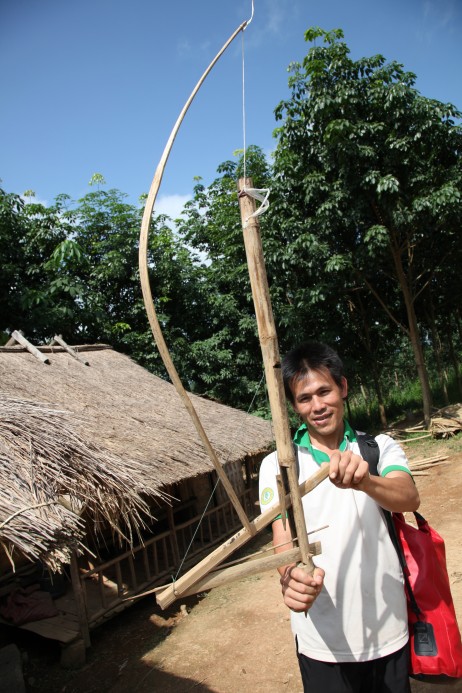India! It seems as if our entire journey so far has been leading us to (and preparing us for) India. Now here we are, toughened by our time in Southeast Asia and ready for anything. We had been warned of the intensity of India, the crush of humanity, the poverty, the mountains of garbage — and yes, there were glimpses of all this — but there was another India that was nothing like we imagined it. Our experience of the country was not scary in the least. (Contrary to our expectations, we never even had to invoke the Optimistic Eye. As usual, low expectations seem to be the yellow brick road to happiness.) In fact, our time in India has been exhilarating, one of our favorite legs of our journey. From the minute we stepped foot in Delhi, we were greeted with one happy surprise after another. The weather in Northern India in December is temperate and lovely, the people we met there broadened our understanding of their culture, their religion(s), and their way of life. India would surely provide us some hard days, there would be mild bouts with sickness, but we’re thrilled to share our eye-opening view of this beautiful land.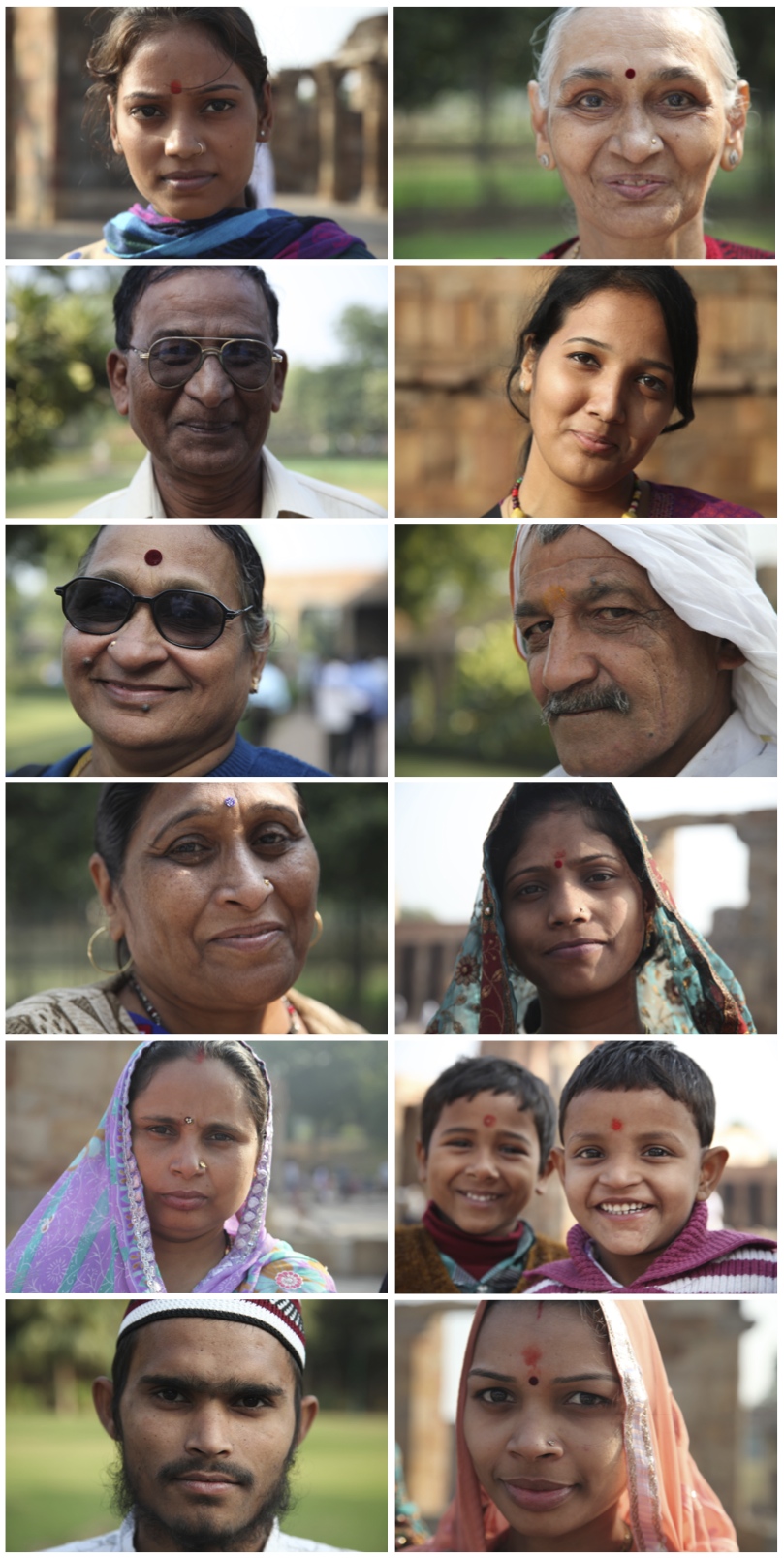 Just as we experienced in Beijing, scores of people wanted to have their pictures taken with us (especially the children). In India, we decided to barter — having honed our bartering skills throughout our journey. When someone asked to take our picture, we asked if we might also get a photo of them. These are just a few of the many extraordinary faces of India that we encountered in just our first couple days.
Just as we experienced in Beijing, scores of people wanted to have their pictures taken with us (especially the children). In India, we decided to barter — having honed our bartering skills throughout our journey. When someone asked to take our picture, we asked if we might also get a photo of them. These are just a few of the many extraordinary faces of India that we encountered in just our first couple days.
THE MANY FACES OF INDIA
THE OPTIMISTIC EYE
When you have a travel blog, it’s easy to edit out the difficult parts and make everything seem wonderful. It turns out — thanks to the wisdom of a nine-year-old — that you can do this in your day-to-day life as well. We proudly present a phrase and a concept that has carried our family across the bumpiest roads and helped us get through our toughest days.
HOW OTHERS LIVE: THE FLOATING VILLAGE
Throughout our travels, we’ve discovered a handful of villages (complete with schools, stores and hospitals) floating in the middle of vast bodies of water throughout Southeast Asia. The first was in Ha Long Bay, Vietnam. The second was a fishing village in Thailand. But we didn’t get to know either of these villages as intimately as we got to know the floating village on Tonle Sap Lake in Cambodia. Join us for this (very) close-up look at how other people live across the world.
FRANNY REPORTS: LAOS JOURNAL
A thirteen-year old girl reflects on a hike through the bug-filled jungle on a sweltering day and what she discovers.
LOOK AT THAT MONKEY JUMP
Come with us on a trip upriver in Thailand, where our family of primates has an unexpectedly close encounter with another family of primates. (WARNING: Adult content. Sexual situations.)
HARD LESSONS: THE KHMER ROUGE
Nowhere has history come alive for us more than Cambodia. Just forty years ago, the Khmer Rouge swept in, ostensibly as the “Peace Party,” after the wars of Southeast Asia, and proceeded to exterminate two million of their own people. A generation was literally wiped out. The Khmer Rouge regime executed almost the entire professional class. If you went to college, you were killed. If you wore glasses, you were considered to be an intellectual and hence executed. Of four thousand doctors in Cambodia before Pol Pot’s rule, only forty doctors remained. Every person from the city was marched out into the countryside because Pol Pot, the despotic leader, believed in making an entirely agrarian society. Phnom Penh became a ghost town. Families were split apart. Men and women were made to marry and have children. Everyone was made to farm rice, but very few knew how so a terrible famine came. Everyone in the country today has been directly touched by this genocide. It is impossible to escape.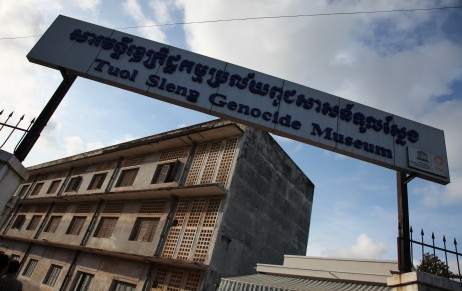 So when you travel to Cambodia, none of this feels like history at all. It feels much more immediate. When we visited S-21, the former high school which was transformed into a prison in the heart of Phnom Penh, now a genocide museum, Franny had so many questions, all stemming from “How could this happen?” Answers are hard to provide. Our family had read Orwell’s “Animal Farm” at the beginning of our trip and we find it is apropos over and over again — in China, in Laos, in Argentina — a regime that claims to be for the people crushing the very people it says to be representing. But even within this context, the Khmer Rouge is barely fathomable. What kind of power did Pol Pot possess that he could lead so many to do such horrible things to their brethren?
So when you travel to Cambodia, none of this feels like history at all. It feels much more immediate. When we visited S-21, the former high school which was transformed into a prison in the heart of Phnom Penh, now a genocide museum, Franny had so many questions, all stemming from “How could this happen?” Answers are hard to provide. Our family had read Orwell’s “Animal Farm” at the beginning of our trip and we find it is apropos over and over again — in China, in Laos, in Argentina — a regime that claims to be for the people crushing the very people it says to be representing. But even within this context, the Khmer Rouge is barely fathomable. What kind of power did Pol Pot possess that he could lead so many to do such horrible things to their brethren?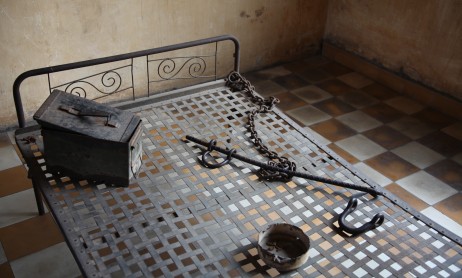 The extraordinary part is that the Cambodian people we met — just one generation removed from these horrors — absolutely amazed us. Everyone we encountered was directly affected by the Khmer Rouge — either their father was killed, or their brothers were killed, or they grew up in refugee camps on the Thai border. But somehow, these Cambodian people who survived still show a remarkable joyous spirit. They are kind, welcoming and generous. This testament to human resiliency stands in stark contrast to the country’s horrifying recent history.
The extraordinary part is that the Cambodian people we met — just one generation removed from these horrors — absolutely amazed us. Everyone we encountered was directly affected by the Khmer Rouge — either their father was killed, or their brothers were killed, or they grew up in refugee camps on the Thai border. But somehow, these Cambodian people who survived still show a remarkable joyous spirit. They are kind, welcoming and generous. This testament to human resiliency stands in stark contrast to the country’s horrifying recent history.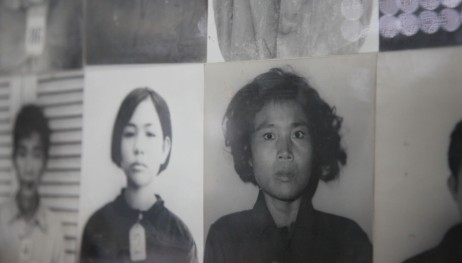 After experiencing S-21 Prison, Franny wrote down her impressions: “Glass sticking up from the towering gates. Barbed-wire on every door. No chance at escape, no dreams of freedom. Stepping into the jail cells in S-21, I could only imagine the terror that went down there. Seeing endless pictures on the walls of the innocent people who were killed just because they could read or write, or knew too much, brought tears to my eyes. S-21 was once a school, where children learned to read and write, but after the Khmer Rouge it became a torture chamber. So close to the middle of a beautiful city, it is where many people spent their last days on earth. S-21 is a reminder that too much power placed in the wrong hands can lead to terrible, unimaginable things.”
After experiencing S-21 Prison, Franny wrote down her impressions: “Glass sticking up from the towering gates. Barbed-wire on every door. No chance at escape, no dreams of freedom. Stepping into the jail cells in S-21, I could only imagine the terror that went down there. Seeing endless pictures on the walls of the innocent people who were killed just because they could read or write, or knew too much, brought tears to my eyes. S-21 was once a school, where children learned to read and write, but after the Khmer Rouge it became a torture chamber. So close to the middle of a beautiful city, it is where many people spent their last days on earth. S-21 is a reminder that too much power placed in the wrong hands can lead to terrible, unimaginable things.”
THE STORY OF RUBBER
Back in the 70’s, we grew up loving “Mister Rogers’ Neighborhood,” especially the regularly featured short films showing, say, the process of how peanut butter gets manufactured or how blankets are woven and stitched. So drawing significant inspiration from the late great Fred Rogers (who left this mortal coil in 2003), we decided to make one of these little numbers ourselves. Straight out of Cambodia, we give you our family’s take on The Story Of Rubber.
THE SMALL GUIDES
As soon as we arrived at Odong, an ornate temple dedicated to the past kings and queens of Cambodia built high atop a mountain about forty kilometers from Phnom Penh, a handful of local schoolboys approached us. We didn’t realize it at that time but we were about to have one of the most unexpected and significant encounters on our around-the-world journey. Come with us to Odong and meet the remarkable Small Guides who showed us the way.


